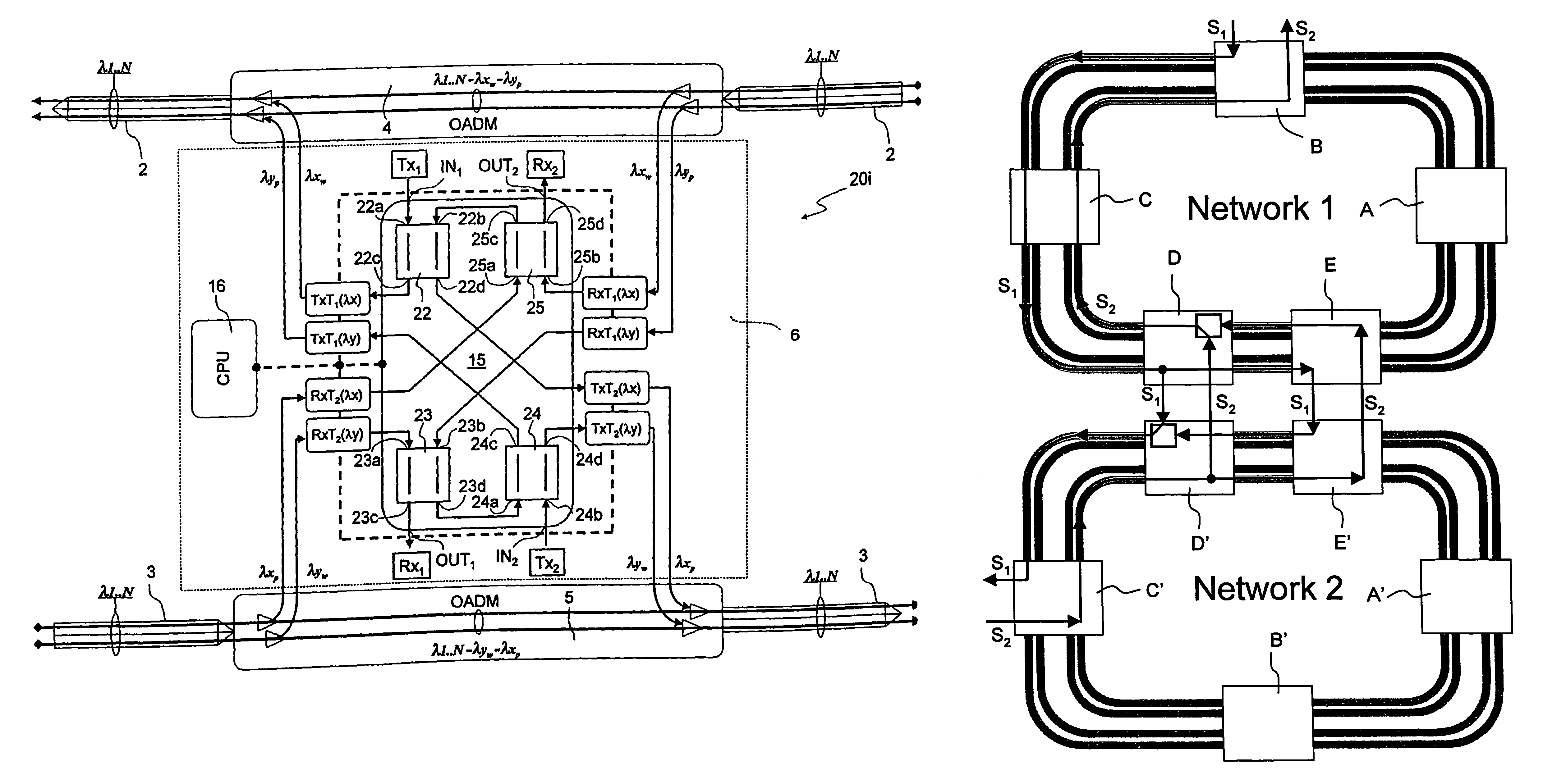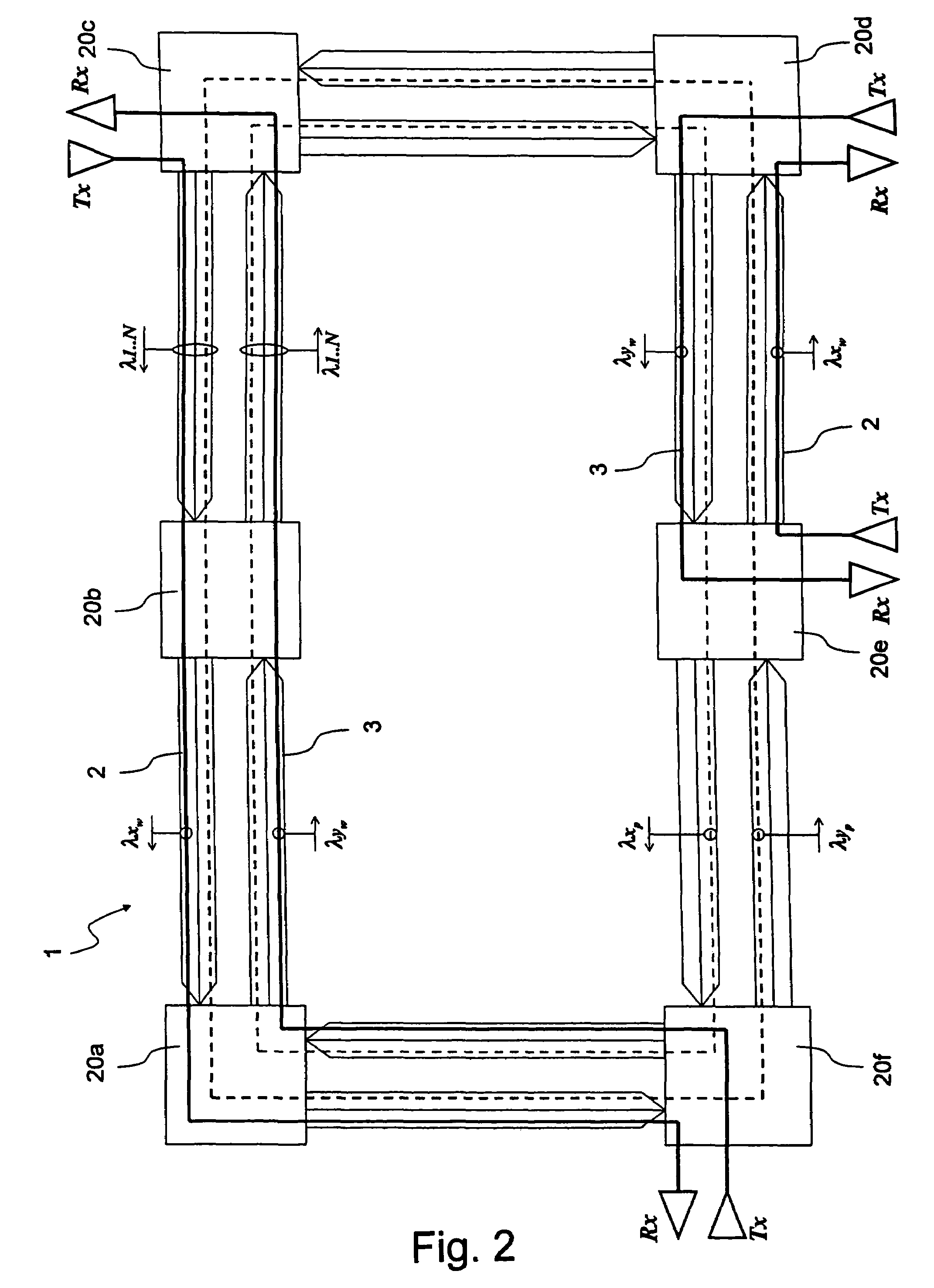Autoprotected optical communication ring network
a technology of optical communication ring network and protection mechanism, which is applied in the direction of multiplex communication, transmission monitoring, instruments, etc., can solve the problems of temporary failure of all other working channels, inability to protect more than n channels, and inability to have different protection mechanisms
- Summary
- Abstract
- Description
- Claims
- Application Information
AI Technical Summary
Benefits of technology
Problems solved by technology
Method used
Image
Examples
Embodiment Construction
[0126]Schematically shown in FIG. 2 is an optical communication ring network 1 according to the present invention. NetWork 1 includes a first and a second optical fiber ring 2, 3 defining respective optical carriers having opposite transmission directions, and a plurality of nodes 20a–20f for adding and dropping optical signals, positioned along the first and the second ring 2, 3.
[0127]Network 1 is adapted to be used for both terrestrial transmissions and transoceanic transmissions. For long-haul transmissions, in particular for transoceanic transmissions, network 1 is preferably provided with line optical amplifiers and / or boosters and / or preamplifiers (not shown).
[0128]In the schematic representation of FIG. 2, rings 2, 3 define an external and, respectively, an internal ring, having a counter-clockwise transmission direction and, respectively, a clockwise transmission direction. The nodes in network 1 have been chosen in number of six just by way of example and the present invent...
PUM
 Login to View More
Login to View More Abstract
Description
Claims
Application Information
 Login to View More
Login to View More - R&D
- Intellectual Property
- Life Sciences
- Materials
- Tech Scout
- Unparalleled Data Quality
- Higher Quality Content
- 60% Fewer Hallucinations
Browse by: Latest US Patents, China's latest patents, Technical Efficacy Thesaurus, Application Domain, Technology Topic, Popular Technical Reports.
© 2025 PatSnap. All rights reserved.Legal|Privacy policy|Modern Slavery Act Transparency Statement|Sitemap|About US| Contact US: help@patsnap.com



